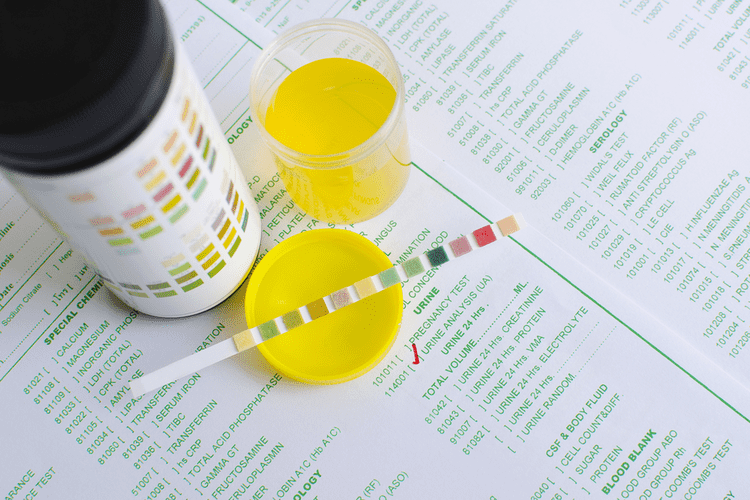The important thing to understand, though, is that this presumed benefit is just a theory. There is no research to show a definite link between drinking red wine and improved diabetes management. Alcohol is absorbed directly into the bloodstream from the stomach or the small intestine, carried through the body, and delivered to the liver.
Drinking with diabetes: What to keep in mind
In contrast to chronic alcohol consumption in the fed state—which raises blood sugar levels, resulting in hyperglycemia—alcohol consumption in the fasting state can induce a profound reduction in blood glucose levels (i.e., hypoglycemia). That effect has been observed in both type 1 and type 2 diabetics as well as in nondiabetics (Arky and Freinkel 1964). Hypoglycemia can have serious, even life-threatening, consequences, because adequate blood sugar levels are needed to ensure brain functioning. Furthermore, acute alcohol administration [98] and long-term ingestion of moderate doses of alcohol consumption [113] have been infrequently reported to reduce insulin secretion. Hence, while alcohol appears to inhibit insulin secretion in vitro, its effects under in vivo conditions are more variable and may be model- and/or species-dependent.
- Some alcoholic drinks are worse than others when you have type 2 diabetes.
- A sex-interaction term was found to be significant (P ≤ 0.001) and improved the fit of the model (P ≤ 0.001).
- Consuming alcohol can worsen diabetes complications, such as retinopathy (damage to blood vessels in the retina), neuropathy (nerve damage), and nephropathy (kidney damage).
- Several biological mechanisms have been proposed to explain the apparent reduction in risk of type 2 diabetes among moderate drinkers.
Can people with diabetes drink alcohol?
For diabetes, ignoring the sick quitter effect will tend to overestimate the benefit of moderate consumption and underestimate the risk of heavy consumption. However, adjusting for this required some estimate of the proportion of abstainers who are lifetime abstainers. For men, this was based on three studies (19,21,24) in which 37.6% of current abstainers were former drinkers and, for women, four studies (19,21,24,33) in which 49.6% mixing alcohol and percocet of current abstainers were former drinkers. These estimates are a potential source of bias because the true underlying proportion of former drinkers may be higher or lower. Given the lack of a valid external estimate, we felt our data-driven approach was reasonable. If you have diabetes, drinking alcohol may be safe for you as long as you choose the right types of drinks and consider alcohol’s effects on your blood sugar levels.
Alcohol’s Impact on Blood Sugar
If you’re taking medication, talk with your doctor about whether and how you can safely drink alcohol. This may happen because your liver can’t maintain basal blood sugar levels while also metabolizing alcohol. This may lead to excessively low blood sugar — and even more so if you drink on an empty stomach (2). The 2020–2025 Dietary Guidelines for Americans define moderate alcohol intake as up to 1 drink per day for women and up to 2 drinks per day for men (7).
First, alcohol likely stimulates the generation of VLDL particles in the liver, which are rich in triglycerides. Third, alcohol may enhance the increase in triglyceride levels in the blood that usually occurs after a meal. Tomato juice in a Bloody Mary provides lycopene, a pigment in tomatoes that has antioxidant and anti-diabetes properties and may protect people with diabetes from heart disease (29, 30, 31). Aside from having a low carb content, red wine may lower the risk of diabetes-related complications if consumed in moderation.
What’s more, when the liver breaks down alcohol, it converts it to fat, which can contribute to weight gain. Excess weight can contribute to the onset of type 2 diabetes, and it can make the condition worse. Glucagon kits, widely used to treat hypoglycemia in type 1 diabetes, do not work as well if someone has alcohol in their system.
Six studies included only men, five only women, eight both men and women (separately), and one men and women combined together. All but four adjusted for age at minimum; for these, only crude measures were available once those that adjusted for factors on the causal pathway were excluded. Diabetes ascertainment varied from self-report and data linkage to national registers to an oral glucose tolerance test (OGTT), the current clinical gold standard.
Although the biological mechanism responsible for this relationship is still a matter of research, several possibilities exist including increased insulin sensitivity with low levels of alcohol consumption. These factors, together, add weight to the argument for a causal role of alcohol consumption in diabetes. Alcohol consumption in men and women should thus be limited to moderate amounts, and heavy consumption should be discouraged.
In most patients, the disease develops before age 40, primarily during childhood or adolescence. In those patients, the immune system attacks certain cells of the pancreas, called beta cells. (For more information on the structure and function of the pancreas, see textbox, p. 213.) Beta cells produce insulin, one of the two major hormones involved in regulating the body’s blood sugar levels and other metabolic functions. Most importantly, insulin leads to the uptake of the sugar glucose into muscle and fat tissue and prevents glucose release from the liver, thereby lowering blood sugar levels (e.g., after a meal) (see figure). As a result of the immune system’s attack, the beta cells can no longer produce insulin.
The ADA also states that a drink or two may improve insulin sensitivity and sugar management. Moderate alcohol consumption does not raise the risk of type 2 diabetes; however, heavy consumption might. Regarding alcohol and diabetes, blood-sugar-reducing medications, such as insulin, increase the risk of low blood sugar, and alcohol increases the risk. Symptoms of low blood sugar include shakiness and confusion and must be treated immediately.
The risk for low blood sugar remains for hours after you take your last drink. This is why you should only drink alcohol with food and drink only in moderation. People with blood sugar issues should avoid consuming mixed drinks and cocktails. These drinks are often full of sugar and empty calories and may increase blood sugar levels.
For categories with no upper limit, median values were defined as 1.5 times the lower limit of the category (9). The prevailing blood glucose concentration is representative of discrete metabolic processes which regulate the rate of appearance (Ra) for glucose versus those which consume and regulate glucose disappearance (Rd). As few metabolic studies are performed in the fed condition, contribution of glucose from gastrointestinal tract absorption to whole-body glucose Ra is typically considered be nominal after an overnight (or longer) fast. Further, despite the possibility that alcohol may increase intestinal glucose absorption, any alcohol-induced change in whole-body glucose Ra is primarily considered a manifestation of glucose output by the liver [25,26].
Post-mortem brain tissues obtained from alcohol-addicted individuals were also analyzed to determine the reproducibility of any in vitro observations in humans. In the current study, scientists investigate the toxic effects of alcohol on both undifferentiated and differentiated human neuroblastoma cells, the most widely used cellular model to study neurodegenerative diseases. detox and treatment articles To this end, neuroblastoma cells were exposed to millimolar (mM) ethanol for up to 24 hours. A recent study published in the journal Antioxidants reports that alcohol exposure can lead to the accumulation of oxidatively damaged proteins in neuronal cells. It acts by inducing an unpleasant physical response (e.g., nausea and vomiting) after alcohol consumption.
The funders had no role in study design, data collection or analysis, decision to publish, or preparation of the manuscript. The views expressed are those of the authors and not necessarily those of the funders. Upon identifying medicine: jews and alcohol time a single study that contributed a substantial proportion of sampled data, an a posteriori sensitivity analysis was undertaken. This explored the effect of excluding the large study from the pooled analysis.
Best-fit curves were assessed using decreased deviance compared with the reference model. Comparisons of curves to determine the best fit were made using a χ2 distribution (41). Overall, the study findings suggest that cell differentiation may promote resistance to alcohol-induced death but cause these cells to become more susceptible to accumulating oxidatively damaged proteins. The profile of damaged proteins observed in this study was similar to that observed in brain tissues of alcoholic individuals. If you have diabetes and are wondering how much alcohol you should drink, it is worth reading the following list to see how much alcohol is contained in each type of drink. Depending on the severity of someone’s alcohol use disorder, they may choose to seek inpatient or an outpatient treatment.…



